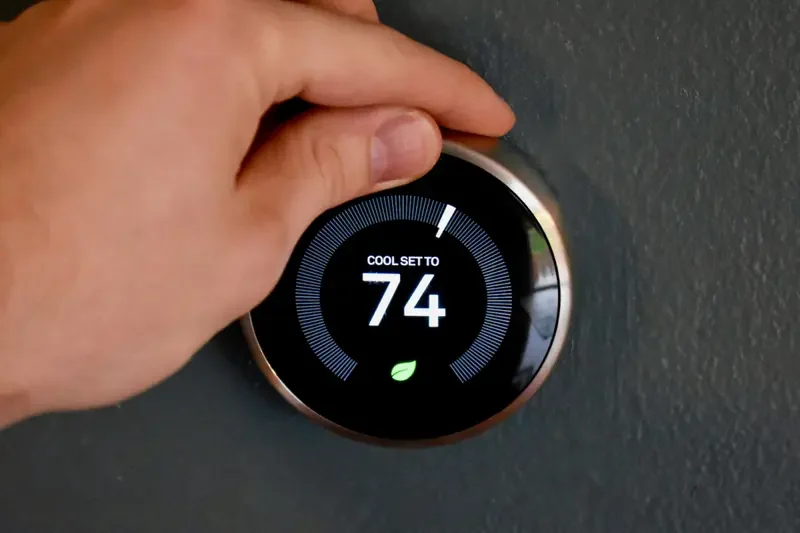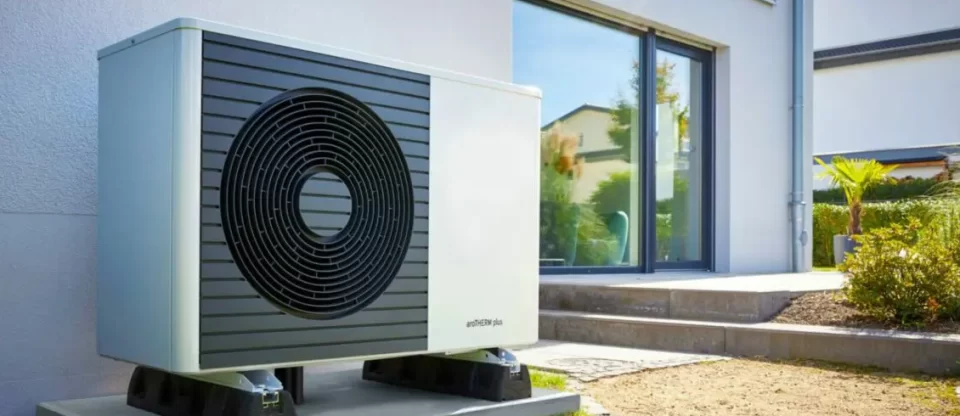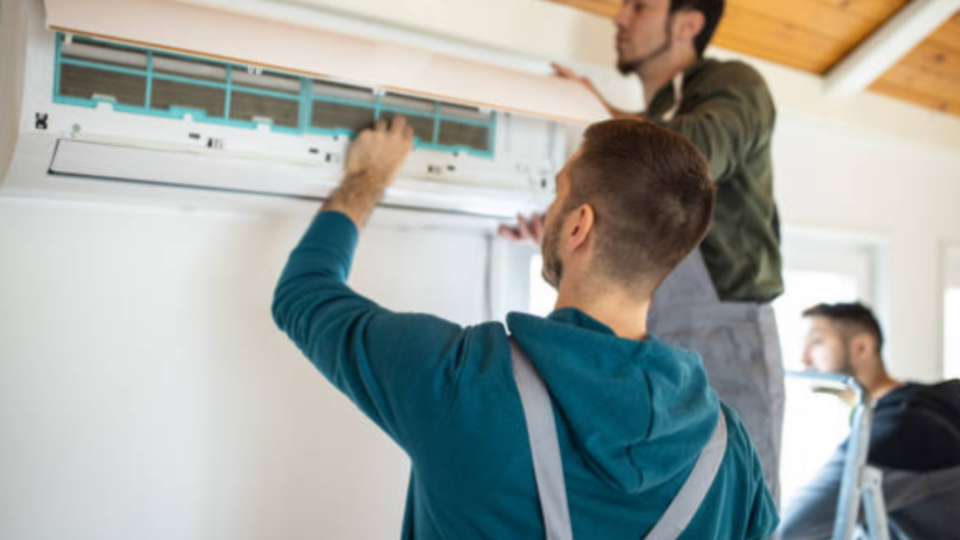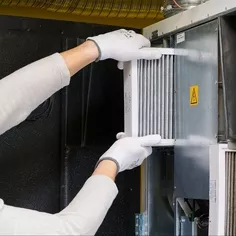Nothing’s more frustrating than walking upstairs and feeling like you’ve stepped into a sauna while downstairs it’s perfectly cool. When your AC ignores the upstairs, it’s more than just annoying—it’s a sign your system isn’t working the way it should.
That’s where zoning and heating services come in. These solutions help balance the temperature throughout your whole house, so every room gets the comfort it deserves. Instead of battling hot and cold spots, zoning lets you control different areas independently, making your home way more comfortable and efficient.
If your upstairs feels like it’s on its own little heat island, it’s time to see what zoning can do to fix that problem for good.
Why Do Some Air Conditioning Systems Struggle to Cool Upper Floors?
Cooling upper floors isn’t just about blasting cold air harder — it’s a unique challenge that many homeowners face. Several factors contribute to why your AC might be ignoring the upstairs:
1. Heat Naturally Rises
- Physics 101: warm air rises while cooler air sinks.
- Upstairs rooms receive heat from the sun’s rays through windows and the roof, often making these spaces warmer than downstairs.
- Without proper airflow and balancing, the upper floors become hot spots.
2. Ductwork Design Limitations
- Many homes have duct systems designed primarily to serve the main floor.
- Long or narrow duct runs, poorly insulated ducts, or blocked vents can reduce airflow upstairs.
- If ducts upstairs are undersized or leaking, the cool air just doesn’t reach the bedrooms and living spaces adequately.
3. Thermostat Location and Configuration
- The main thermostat is often installed on the first floor, meaning the AC cycles off when the downstairs reaches the set temperature—even if upstairs is still sweltering.
- Without separate temperature controls upstairs, the system doesn’t “know” to keep cooling.
4. Older or Inefficient HVAC Systems
- Aging AC units may lack the power or efficiency to handle the increased cooling load of a multi-story house.
- Systems not designed for multi-zone control can struggle to balance airflow properly.
5. Insulation and Window Issues
- Poor attic insulation or single-pane windows upstairs let heat in and trap it, adding to the cooling burden.
- Without addressing these, the AC has to work much harder to cool upper rooms.
6. Obstructed or Closed Vents
- Furniture, rugs, or closed vents upstairs block airflow.
- This reduces cool air delivery and forces the system to compensate elsewhere.
How Does HVAC Zoning Address Uneven Temperature Distribution in Homes?
If your upstairs is a tropical getaway and downstairs is a winter retreat, HVAC zoning could be the game-changer you need.
What Is HVAC Zoning?
Zoning divides your home into separate areas or “zones,” each with its own thermostat and control system. Dampers in the ductwork open or close to regulate airflow to these zones independently. Essentially, it’s like having multiple mini-HVAC systems tailored to different parts of your house.
How Does It Work?
- Thermostat control: Each zone has its own thermostat that communicates with the HVAC system.
- Dampers adjust airflow: Based on each zone’s temperature, dampers open or close to allow more or less air through.
- Custom comfort: Upstairs and downstairs can be cooled or heated according to their unique needs.
Benefits of HVAC Zoning for Multi-level Homes
- Balanced temperatures: No more freezing downstairs while melting upstairs.
- Energy efficiency: You only cool or heat the areas in use, saving money on utility bills.
- Extended equipment life: Your HVAC doesn’t have to run harder than necessary.
- Increased comfort: Everyone in the house can set their zone to their preferred temperature.
Is HVAC Zoning a Good Fit for Your Home?
- Homes with two or more stories.
- Houses with inconsistent insulation or sun exposure.
- Families with varying comfort preferences.
- Homes with frequent unused rooms or spaces.
While installation involves some upfront investment, the comfort and energy savings often pay off quickly.
What are Common Signs of Poor Airflow in Multi-level Houses?
Spotting poor airflow issues early can save you from discomfort and costly repairs later. Here are some telltale signs:
1. Hot or Cold Spots
- Certain rooms, especially upstairs, feel much hotter or colder than others.
- You may notice the upstairs thermostat struggling to reach the set temperature.
2. High Energy Bills
- Your HVAC runs longer or cycles frequently without achieving comfort.
- Increased electricity usage signals inefficiency caused by airflow issues.
3. Uneven Air Vents
- Some vents blow warm air instead of cool air during summer, or vice versa.
- Vents may feel weak or have inconsistent airflow.
4. Dust Accumulation and Allergies
- Poor airflow can cause dust buildup due to stagnant air.
- Family members may experience worsening allergies or respiratory issues.
5. Noisy HVAC System
- You might hear banging or whistling noises caused by blocked or restricted ducts.
- The system may overwork itself trying to compensate.
6. Humidity Problems
- Upper floors feel humid or clammy despite the AC running.
- Poor ventilation can trap moisture upstairs.
7. Temperature Lag
- It takes a long time for rooms upstairs to cool down, or they never fully cool.
- The thermostat seems unresponsive to adjustments.
If you notice these signs, it’s time for a professional HVAC evaluation to diagnose and fix the root cause.
Can Heating Services Improve Overall Comfort in Upstairs Rooms?
When we talk about temperature comfort upstairs, cooling isn’t the only player. Heating services also have a crucial role to maintain a balanced climate year-round.
Why Heating Matters Upstairs
- Heat rises, but in winter, upper floors can get colder due to poor insulation and drafts.
- Single-zone heating systems often favor the downstairs, leaving upstairs chilly.
- Cold bedrooms or bathrooms can make winter mornings uncomfortable.
How Heating Services Help
- Zoned Heating Control: Like cooling, zoning allows independent heating upstairs, so you’re never shivering under extra blankets.
- System Tune-ups and Maintenance: Regular heating system inspections ensure efficient operation, especially before colder months.
- Upgraded Heating Solutions: Modern heat pumps or dual-fuel systems can provide efficient, targeted heat upstairs.
- Improved Insulation and Sealing: Complementing heating services with insulation fixes reduces heat loss.
- Smart Thermostat Installation: Programmable or learning thermostats optimize heating schedules based on occupancy and preferences.
- Supplemental Heating Options: Sometimes adding baseboard heaters, radiant floors, or ductless mini-splits upstairs improves comfort without overworking the main system.
Benefits of Addressing Heating Upstairs
- Consistent warmth and comfort during colder months.
- Reduced energy waste by avoiding overheating other areas.
- Healthier living environment, reducing risks of mold or cold-related illnesses.
Heating and cooling should work hand-in-hand to deliver balanced comfort throughout your multi-level home.
When your AC seems to ignore the upstairs, it’s not just a nuisance—it’s a clear signal that your HVAC system needs a smarter approach. From natural heat dynamics and ductwork challenges to thermostat placement, the reasons for uneven cooling are many. Fortunately, HVAC zoning offers a tailored solution that can revolutionize how your home feels, floor by floor.
Recognizing the common signs of poor airflow early can save money and discomfort, while integrating quality heating services ensures that upstairs comfort isn’t sacrificed when winter comes knocking. By partnering with experienced HVAC professionals, you can customize your system to your home’s unique needs and your family’s comfort preferences.
Don’t settle for an upstairs sauna or an icy basement—embrace the power of zoning and heating services to enjoy perfect indoor climate harmony year-round.
Elevate Your Home Comfort with Elite Air & Heat LLC Columbia — Tailored Solutions for Every Room
At Elite Air & Heat LLC Columbia, we do more than repair HVAC systems — we improve your whole home comfort. Struggling with uneven temperatures between floors? Our experts diagnose airflow problems and design custom zoning systems to balance heating and cooling throughout your home.
Using advanced technology and skilled workmanship, we ensure your system runs efficiently year-round. From smart thermostats to duct optimization and maintenance, we handle it all. Our approach extends your system’s life and cuts energy costs by delivering comfort exactly where you need it.
Contact Elite Air & Heat LLC Columbia for a climate solution tailored to your home and budget.





